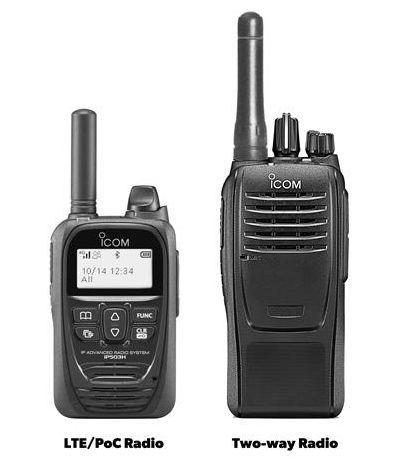Explaining the Differences Between LTE/POC Radios and Two-Way Radios

What is an LTE/PoC Radio?
While two-way radios use radio frequencies to transmit signals, LTE/PoC radios or Push to Talk Over Cellular (PoC) utilise mobile networks. Equipped with multi-network roaming SIM cards these radios can always find the strongest signal available. The technology allows users to instantly communicate with others nationwide as long as they have a cellular network signal. This feature is particularly beneficial for companies with staff members who frequently travel and need to communicate on a broader scale. AppearanceAlthough some LTE/PoC devices look like a smartphone many resemble traditional two-way radios and offer a range of features including an emergency button, Man down and Lone worker functions. . Set-Up
Depending on the device there are many set-up options available and most programming can be done ‘Over the Air’. Data services for these radios are typically available through a monthly subscription.
Picture shows IP503H LTE/PoC Radio alongside the unlicensed IC-F29DR3 Digital PMR446 Radio.
How are LTE/PoC Radios Different from Two-Way Radios?
While the two have many similarities, the main difference lies in how they operate. Two-Way RadiosTwo-way radios operate using radio frequencies and do not rely on a mobile network for transmission. This makes them highly reliable for users working in remote locations or with limited mobile network coverage. . There are various options available for two-way radios. . Unlicensed Two Way Radios
For the general public and small businesses unlicensed two way radios, often called "walkie talkies," transmit over PMR446 frequencies which are free to use. There may be potential interference and limited range associated with these unlicensed radios. Congestion on these frequencies can lead to channels being busy. . Licensed Two Way Radios
For business professionals who require extended range and enhanced security, licensed two way radios are more suitable. These radios require an Ofcom license to operate and this provides users with a dedicated frequency. Ofcom licenses are valid for up to five years, and there is no limit to the number of radios a user can have under a single licence.

